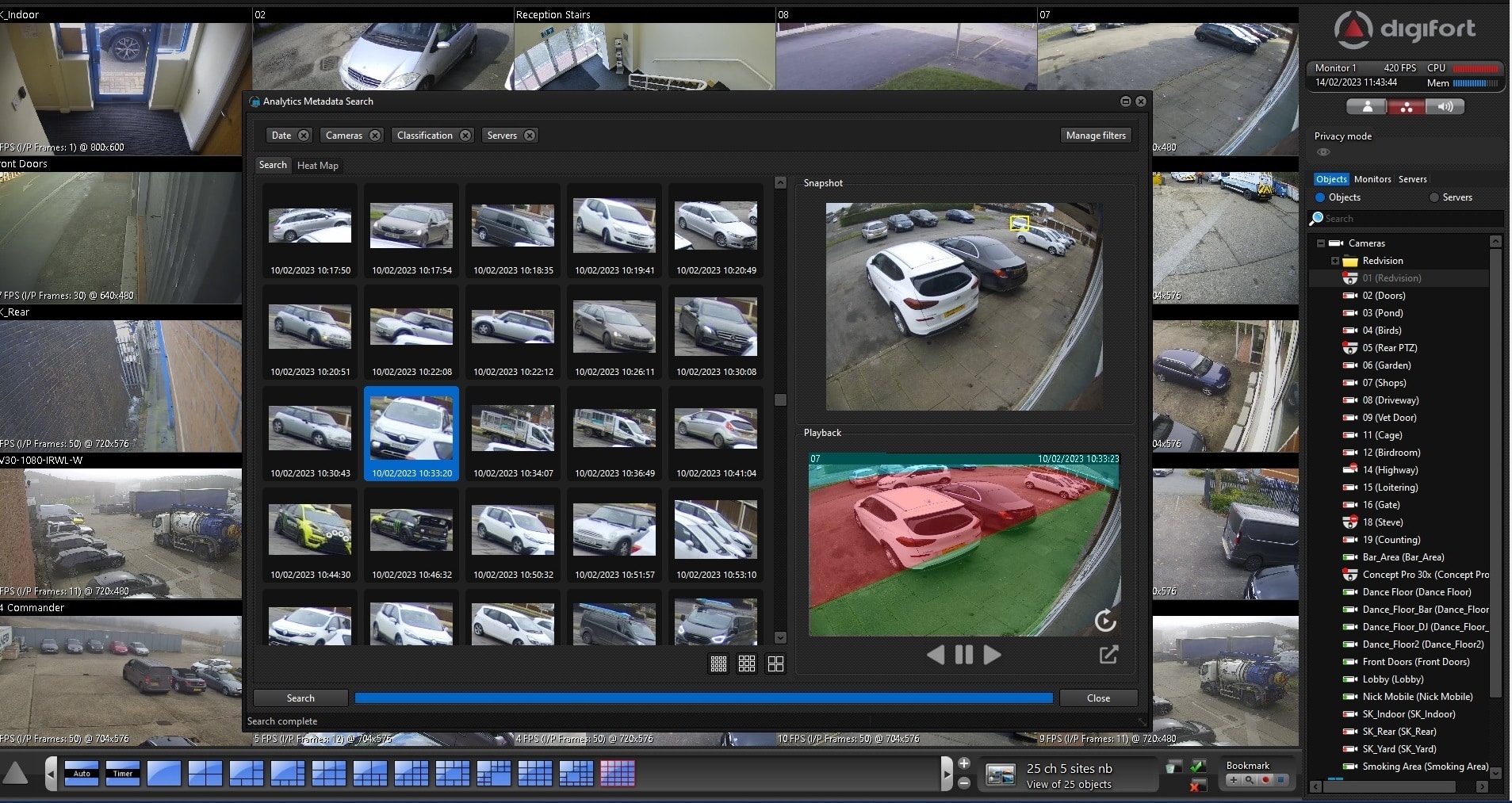
Open-platform Video Management Systems (VMS) experts, Digifort, explain how its technology can be applied from nuclear power stations to shopping malls, says MD Nick Bowden
The Digifort open-platform VMS is proven, unified, trusted, and secure. It is used in many UK applications from power stations to ports to shopping malls.
We operate a one-time-buy camera licensing model with no annual maintenance fees and free software upgrades.
The Digifort VMS is future-proof, with expansion options available for cameras, devices and systems with extras added at any time.
Digifort is SDKintegrated and supports server failover in mirrored, ratio and parallel recording, along with cloud streaming and backup. Products also allow control of NVRs and DVRs, coordinating a mixed estate of brands into one common platform for live viewing and playback.
Our graphic user interface (GUI) runs on Windows-based Operating Systems, such as Server 2019 and Windows 10 with familiar display screens, functions, menus, help windows and manuals.
Analytics based on AI
Digifort has enhanced its Deep Learning (DL) AI video analytics engine to include metadata searching and processing. The analytics is state-of-the art, optimised to run on NVidia Graphics Processing Units GPUs using CUDA processing technology.
Analytics can be used to identify object types and colour content in real-time by clothes they are wearing.
In version 7.4, metadata allows retrospective searches of the recorded video and can look for different objects and events.
So, even if the system was configured to identify blue jackets, operators can apply new searches, such as vans or bikes.
The system only looks for metadata content, which relates to objects detected in the video – processing 30 days’ video in minutes.
Licence Plate Recognition (LPR)
LPR is a module within Digifort. In the 7.4 upgrade, there are three different recognition engines.
These are optimised for different vehicle criteria, such as stationary vehicles at a barrier or in a car park, through to fast-moving vehicles on highways.
In a car park type application, Digifort will tag a plate as ‘entry’ or ‘exit’ to give a vehicle’s entry and exit dates and times, length of stay, count, car park occupancy and average occupancy.
In fast-moving vehicle applications, Digifort enables real-time traffic management on highways allowing for multiple traffic lanes, high traffic density, and most vehicle types.
A region of interest (ROI) can be applied to specific areas within a camera’s field of view to look for plates, ignoring all other areas, making plate reading faster. There can be multiple ROIs per camera, supporting multi-lane, plate capture.
The Digifort LPR Bridge links to external databases to give far more comprehensive vehicle and owner information.
Events (and alarms)
Events and alarm status in Digifort version 7.4 are listed within the surveillance client, with customisable features such as colour coding and grouping alarm types; alarm status; days to display alarms before archive; physical alarm mute; and alarm response and processing actions.
Alarms can be reviewed, regardless of status, with actions such as pop ups and messages shown.
Operators are informed of new, incoming events and alarms, selecting whether these should take priority over live, operator actions, or not. There is also a snapshot of the alarm trigger.
Alarms can be ‘pushed’ to a specific screen for review in the surveillance clients, video walls, mobile devices (ID) and control rooms, for a real-time response and full audit trail.
As an example, a stolen car plate could be used to trigger an alarm, sending the plate image and live video to a workstation. At the same time, the plate and multiple, relevant camera views could be sent to the video wall on monitor 18 and to operator four in the control room, with just a plate and vehicle image sent to mobile phones of relevant staff. The flexibility is endless!
Surveillance Client and Videowalls
Clients can control up to eight monitors with multiple camera views and split screens; set up as an operator workstation or joined with others to create a virtual matrix videowall of unlimited monitor numbers.
Custom screen styles can be configured in the Surveillance Client to build multi-screen camera views from a grid. Blue or red highlighting can be used to show feature selection and toolbars can clear when the client is not in use, to give maximum viewing area.
Server online status can also be monitored in the surveillance client, raising an alarm if it goes offline.
Object Linking allows navigation from camera to camera by clicking arrows in the camera view, intuitively tracking people and objects around a site in live, playback, and export mode.
Buttons and zones can be added to camera views and maps, allowing the operator to trigger alarms, relays, open doors etc. This is useful for larger sites.
Administration Client and system configuration
The Administration Client resides on the system servers, or a PC with admin rights, and is used for setup and configuration.
Camera configurations can now be duplicated, edited and applied to new cameras for fast setup.
Maps can now include icons and graphics; cyber security has also been improved with password management and One-Time-Password (OTP) support.
To encourage even more integrations with third party systems, essential in larger projects, the scope of Digifort’s http communications commands has been extended beyond http GET and PUT, enabling greater exchange of information with third-party systems without the need for complex software.
Digifort’s extensive failover capability now includes failover and failback to an edge device, such as a failover server or camera with edge storage.
License structure and server density
Digifort has four licence levels, Explorer, Standard, Professional and Enterprise, ranging in capability. Version 7.4 doubles the channels per server, taking Explorer to 32 channels, Standard to 64 channels and Professional to 128 channels, with Enterprise remaining unlimited. This change supports greater camera density per server.